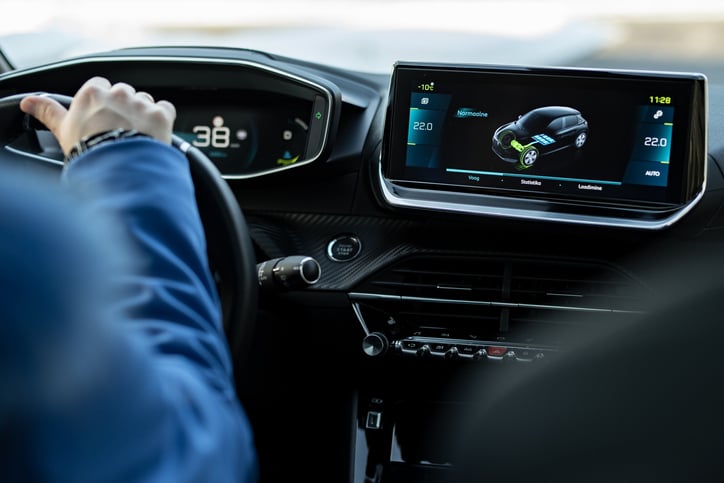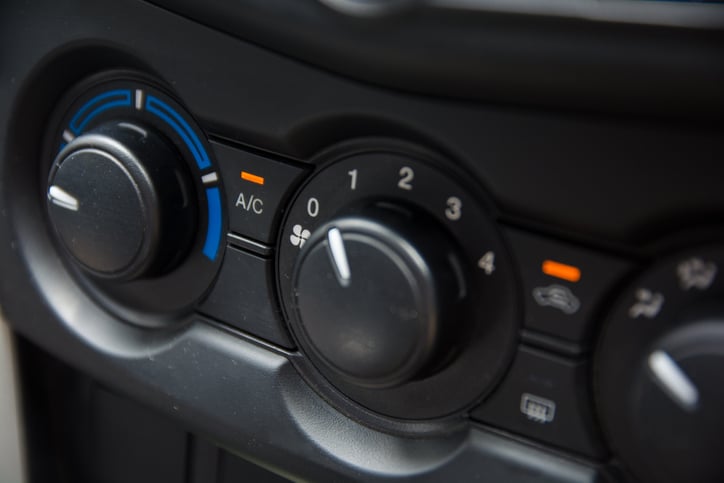Electric Vehicle Component Selection for Efficiency

In designing electric vehicles (EVs), efficiency is key.
Manufactured to reduce the environmental impact, EVs have a much smaller carbon footprint than vehicles with internal combustion engines even accounting for the electricity used when charging up an EV’s battery. A recent Ford/University of Michigan study found that EVs have 64% lower life-cycle emissions than internal combustion engine vehicles.
That which cannot be measured cannot be controlled. In the world of EV’s, that means to maximize efficiency and minimize energy usage, the battery, motor and vehicle controllers need sensors providing feedback on the environment and conditions. However, poor design choices can undermine an EV’s efficiency, resulting in less-than-optimum vehicle performance for driving and charging, which can negatively affect the owner’s experience.
Barriers to EV Efficiency
Often overlooked, one of the biggest design flaws for efficiency in an EV has little to do with its physical appearance, number of battery cells, or motor size. It’s the lack of robust and reliable sensor technology. Poor sensor design or quality can result in decreased effeciency and range as well as increased vehicle maintenance and cost to both the manufacturer and the owner.
Today’s electric vehicles typically have more than 100 individual sensors installed. Sensors work in concert with microcontrollers and embedded systems inside the EV to monitor component temperatures and pressures, measure voltage and current, motor and wheel speed, as well as humidity, camera systems, radar, and more. One of the most critical functions sensors play is to help maintain the battery performance and manage the stress put on it by the demands of use.
Two critical components of EV that require sensor technology to help maintain efficiency are:
- Battery, motor and electronics thermal management systems
- Interior climate control/HVAC systems
Thermal Management Systems
Managing the temperature of the lithium-ion batteries is an essential component of getting peak performance and long life from an automotive battery pack. Temperatures outside of the optimal of 15-45℃ degrade battery performance and decrease battery life.
Below this range, electrochemistry is sluggish. Ions flow more slowly through the battery cells and can cause lithium to build up outside the node forming dendrites, which disrupts the energy flow and uses up some of the lithium that would otherwise be used to power the battery. Available power is thus limited and can reduce range.
Excessive heat also degrades batteries by affecting the Solid Electrolyte Interphase (SEI). This layer makes the electrolyte stable enough to last and protect the anode from corrosion. Excessive heat can affect the SEI protective layer, uses up active lithium, and can prevent ions from flowing. In extreme cases, excessive heat can trigger thermal runaway.
Without monitoring by sensors and regulation of thermal management, EVs are subject to:
- Reduced charging capacity: Impacts how much power an EV battery can hold and is of particular concern for colder climates.
- Reduced ability to hold a charge: Takes longer to fully charge.
- Reduced range: Depletes charges more quickly, requires more frequent charging and reduces EV range.
- Reduce lifespan: Excessive temperatures degrade batteries more quickly, so they won’t last as long and require expensive replacement.
The thermal management system for batteries is foundational to the performance of electric vehicle components and is dependent on the stability and reliability of the sensors. Sensors need to accurately detect battery and coolant temperatures at all times during charging and discharging to ensure the health of the components of batteries in electric vehicles.
Sensor design should consider the need for accuracy, stability, and robustness in use. Both the mechanical and electrical elements of sensor design need to consider the media to be measured, the location at which the measurement is taken, the power consumption of the sensor, and the nature of the signal to be communicated. While some sensors provide a purely analog output, such as the temperature-dependent resistance measurement of a thermistor used in a temperature sensor, some sensors provide a digital stream of data in calibrated engineering units. In all cases, the level of safety of a sensor needs to be evaluated using tools such as DFMEA’s and ISO26262. Safety sensors should have self-diagnostics and if necessary, redundancy such that a single point failure never puts the operator or system at risk.
One of the biggest criticisms of today’s generation of EVs is the limited driving range of Li-ion batteries and the fact that the batteries become less efficient over time. Maximizing power output and minimizing degradation are essential to extending the life of EV batteries, and accurate, reliable sensors contribute to the precision control needed to maintain long-term performance.
HVAC System
 Besides the engine, the electric vehicle components managing the heating and cooling system (HVAC) will put substantial demand on an EV battery. As an EV is a glorified box made of metal and glass, drivers and passengers want to be comfortable. Modern EVs can anticipate the driver’s needs and prepare the cabin for maximum comfort even before the driver enters the vehicle.
Besides the engine, the electric vehicle components managing the heating and cooling system (HVAC) will put substantial demand on an EV battery. As an EV is a glorified box made of metal and glass, drivers and passengers want to be comfortable. Modern EVs can anticipate the driver’s needs and prepare the cabin for maximum comfort even before the driver enters the vehicle.
Early EVs suffered from substantial loss of range whenever the air conditioning or heating systems were utilized, sometimes losing up to 30% of the vehicle range in extremely hot or cold environments.
The latest EV system designs are much more efficient and sophisticated. Early “single loop” heating and air conditioning systems have been replaced with heat pumps and targeted seat heating and cooling. These systems have substantially increased range, as in the case with the Tesla heat pump with Octovalve, which added more than 10% range to the vehicle’s performance in extreme climates.
This sophistication does require more precise monitoring, utilizing combined temperature/pressure sensors at key locations in the system to provide instantaneous feedback on the compression and expansion cycles, allowing the compressor to operate only precisely as necessary to either add or extract heat from the cabin.
Sensor technology provides immediate feedback to the HVAC system to regulate energy consumption from the battery. Multiple types of sensors help regulate the temperature in EVs:
- Refrigerant temperature sensor
- Refrigerant pressure sensor
- Discharge air temperature sensor
- Air flow valve position sensor
- Air filter differential pressure sensor
- Evaporate temperature sensor
- Automatic defog sensor
- Sun load sensor
- Seat and steering wheel temperature sensors
Ensuring EV Efficiency With Sensor Technology
Thermal systems and HVAC systems need to operate efficiently to maintain an EV’s overall performance. The right sensors help keep temperatures within optimal ranges and monitor key systems to prevent battery degradation.
By continuously monitoring the load, temperature, and displacement of batteries and heating and cooling systems, electric vehicles of all types meet expectations in the ongoing electrification conversion in transportation.
Integrate Robust and Reliable Sensors into Your EV’s HVAC & Thermal Management Systems
Speak with one of our engineers about Amphenol sensor technology in your EV’s design.




